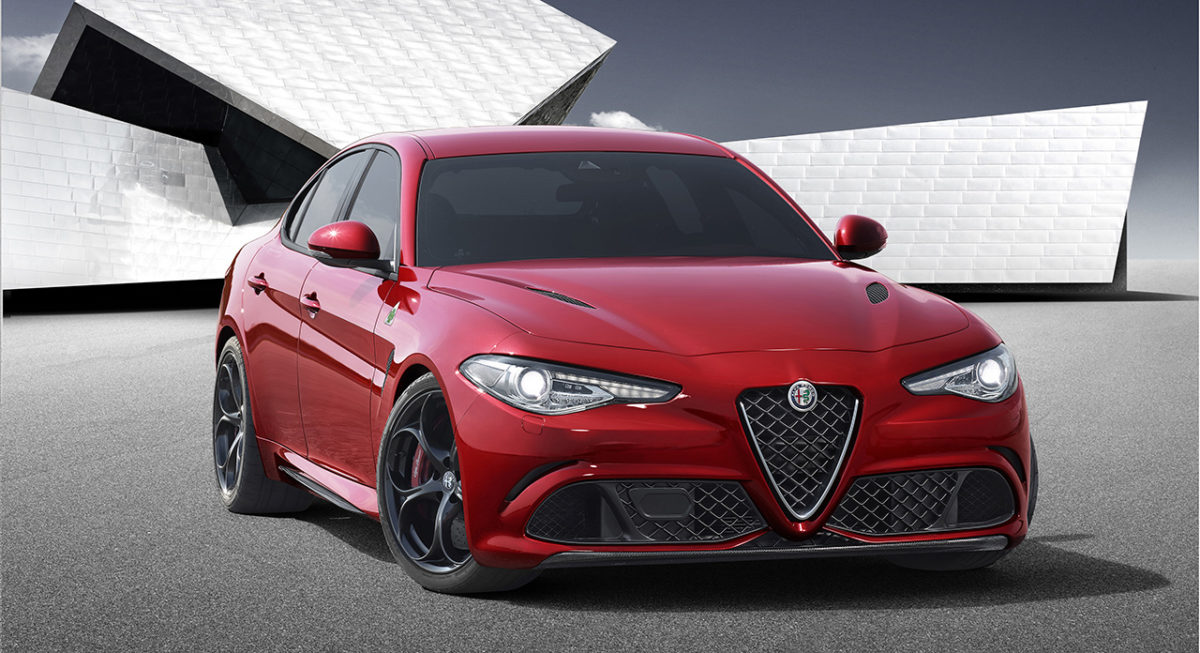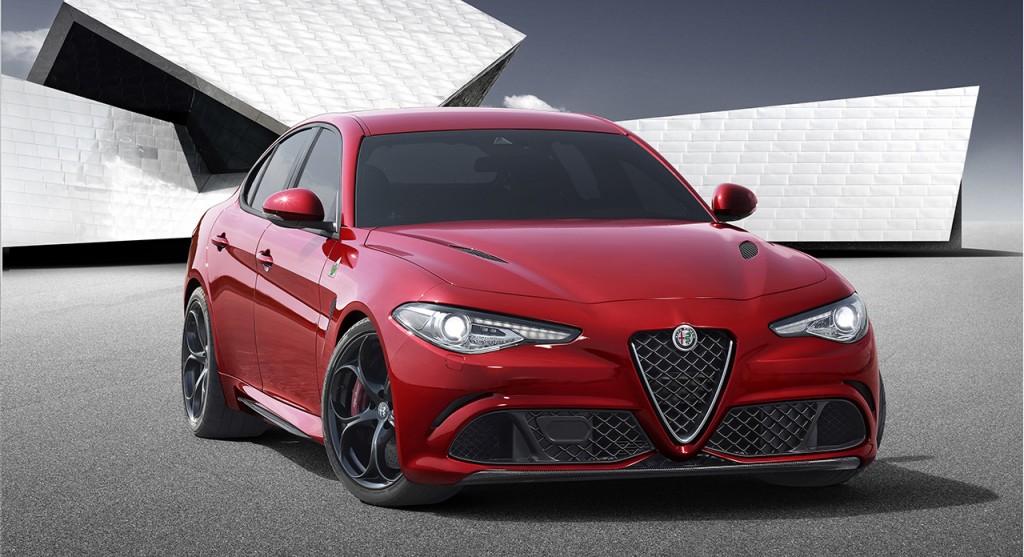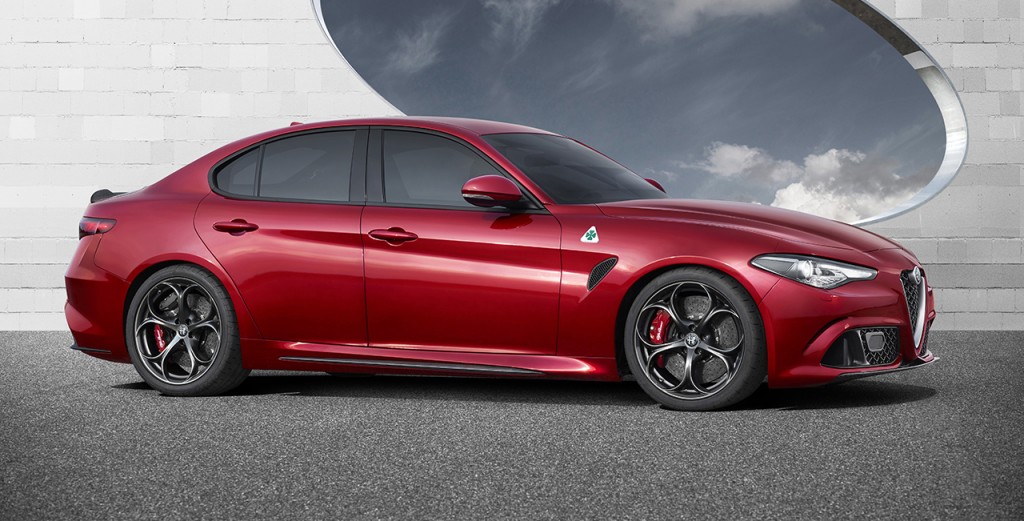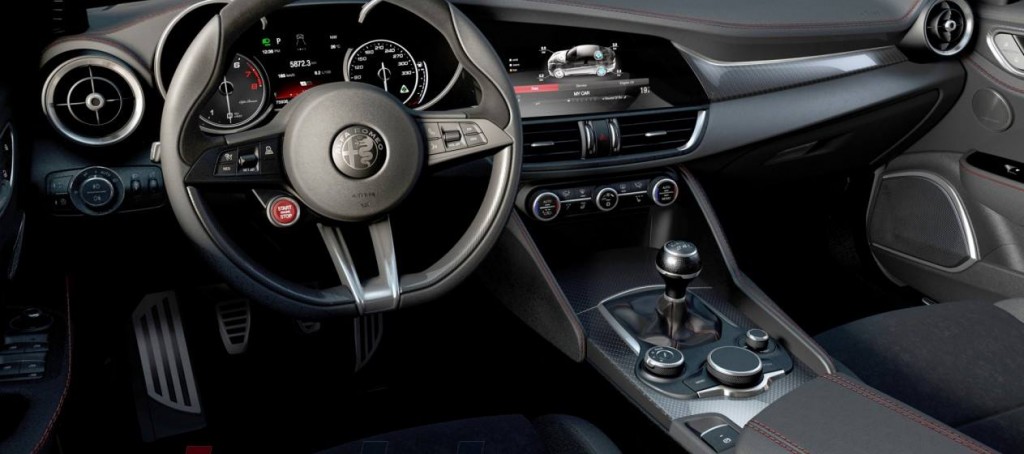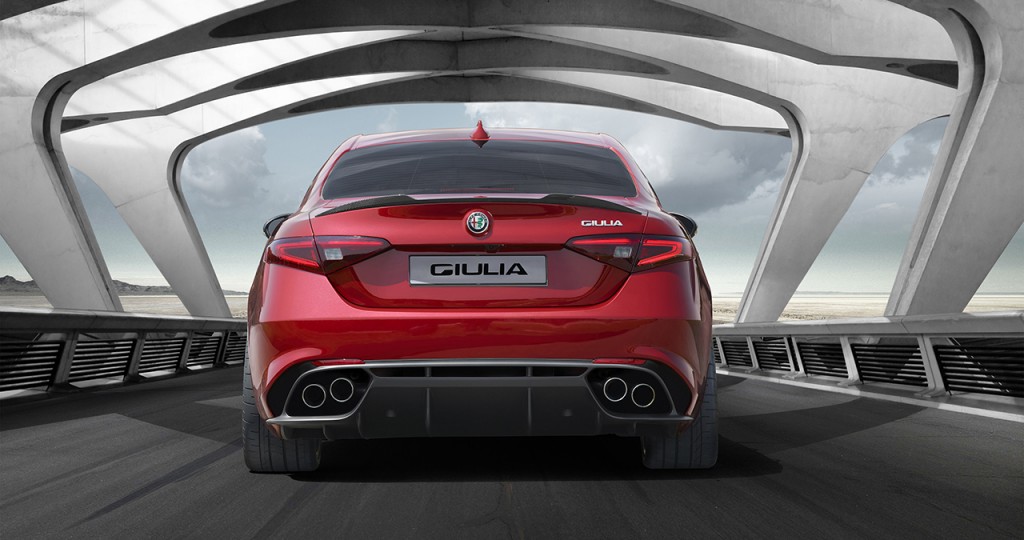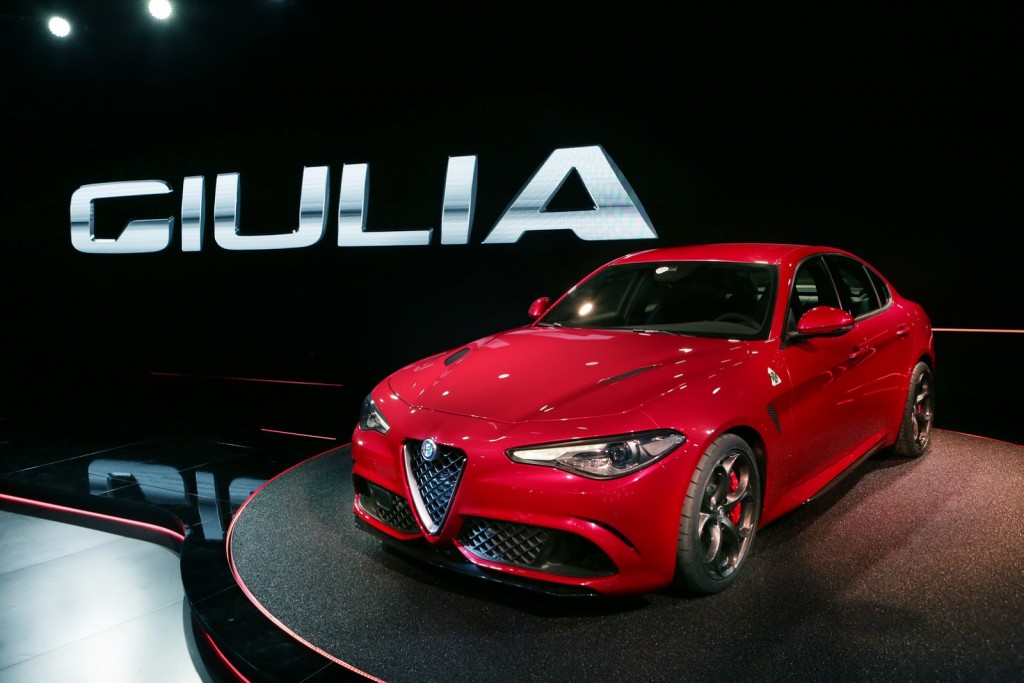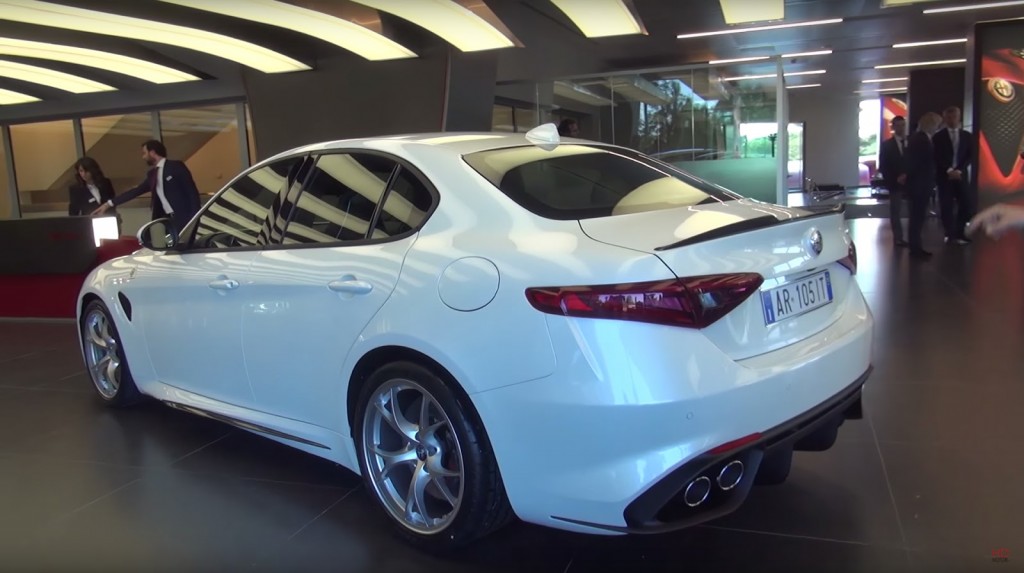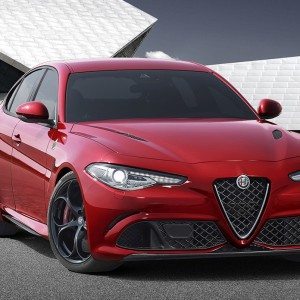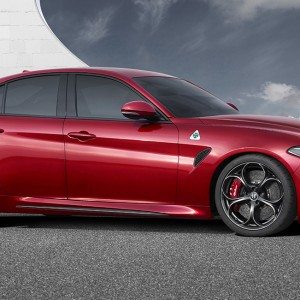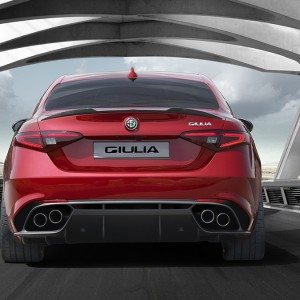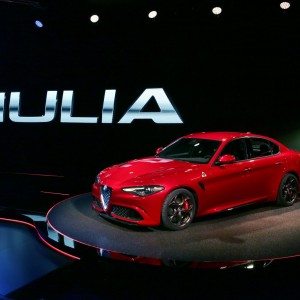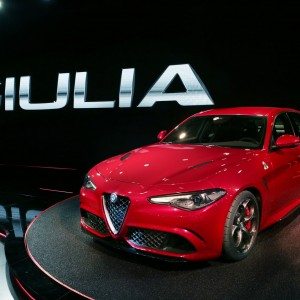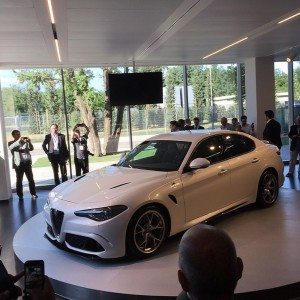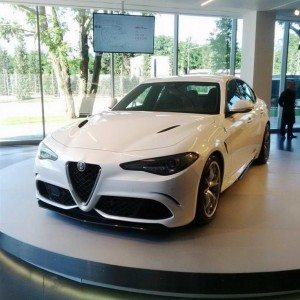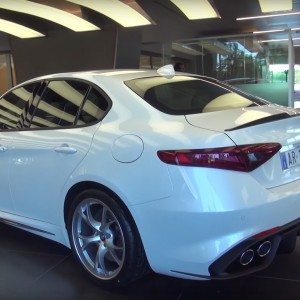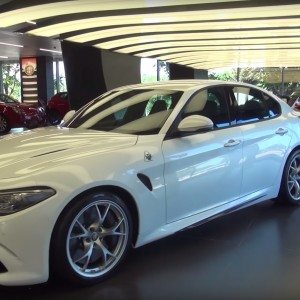You could smell the singed hair over at the German camp, when Alfa Romeo introduced the Giulia to the international press at the Alfa Romeo Museum in Arese, near Milan, yesterday. Celebrating Alfa’s 105th year of auto making, the Giulia débuts with curves to kill, a perfect 50/50 weight distribution and over 500 bhp from its Ferrari derived V6 – a true blooded Italian then, to scare away the German entry level executive sedan trio.
The Giulia was developed by an elite team of engineers, designers and stylists known within FCA as the ‘Skunks’, a sobriquet used in industries in the USA to identify the best squads to whom the most delicate and technologically innovative missions are entrusted. The ‘Skunks’ have one goal: to create the Alfa Romeo of the future respecting the heritage resulting from the work and pride of thousands of people – engineers, factory workers and managers – who have taken turns in the factories, offices and on the race tracks.
Italian design
The Giulia’s classic proportions revolve around the technical architecture of the entire car: the 50/50 weight balance and rear wheel drive layout. In order to balance the weights perfectly, the engine and the mechanical parts are arranged between the two axles. This is why the Giulia has very short overhangs, a long bonnet and front wings, a retracted passenger compartment ‘settled’ on the drive wheels and muscular rear wings.
All this translates into a very generous wheelbase – the longest in its category according to Alfa – but contained in one of the most compact bodies. These proportions draw the dynamic shape of an ellipsis in plan view. Furthermore, the rounded angles and the enveloping pillars convey momentum to the car creating a ‘teardrop-shaped’ profile which is reminiscent of the iconic Giulietta Sprint.
Alfa has always envisioned simplicity in design, and the Giulia’s style is expressed by means of clean, taut lines. A line gouged along the sides mark the doors, envelops the handles and, the trademark trefoil nose, arguably one of the most famous and recognisable style element in automotive history. Alfa reckons that the Giulia’s sculptured shape is reminiscent of a big cat just about to pounce.
The interiors also evoke simplicity and minimalism – everything is clean, essential and centres around the driver, such as the controls grouped on the small steering wheel designed to adapt to all driving styles. The driver’s position was ‘cut’ as a fabric with a diagonal tunnel, a slightly undulated dashboard and cleverly oriented instruments which convey the impression of a tailor-made suit with hand-crafted care and premium materials: carbon fibre, wood and fabrics are chosen.
510 HP!
What was unleashed yesterday was the top-of-the-range Giulia, the model sporting the legendary Quadrifoglio badge. The six-cylinder turbo petrol in the Quadrifoglio version is tuned by engineers with Ferrari background delivers 510 HP and endows the Giulia to accelerate from 0 to 100 km/h in only 3.9 seconds. Alfa reckons that despite the blistering performance figures, the new engine is surprisingly fuel efficient and implements an electronically controlled cylinder deactivation system. This six-cylinder is made entirely of aluminium to reduce weight particularly on the front axle of the car and make that genuinely Alfa Romeo sound (see video below).
Perfect weight distribution
The new Giulia manages a perfect 50/50 distribution across the two axles. The suspensions are as essential for optimal ride as weight distribution. While the rear employs a multi-link system, the front features a new double wishbone suspension with semi-virtual steering axis that was developed to optimise the filtering effect and guarantee rapid, accurate steering. Alfa Romeo says that this suspension layout keeps the constant caster trail on corners and can tackle high lateral accelerations as a result of the always perfect footprint.
Technical solutions and weight savings
Backed up by promising mechanical solutions, the Giulia packs technical solutions like Torque Vectoring with a double clutch to allow the rear differential to control the torque delivery to each wheel separately; an Integrated Brake System – an innovative electromechanical system which combines stability control and a traditional servo brake for instantaneous brake response and consequent record-breaking stopping distances in addition to the all-important weight optimisation – is being introduced on the new Alfa Romeo. These state-of-the-art systems are all governed by Chassis Domain Control, the ‘brains’ of the on-board electronics which assigns the specific task of optimising performance and driving pleasure to each one.
The new Alfa Romeo Giulia modifies the car’s dynamic behaviour according to the driver’s selection: Dynamic, Natural, Advanced Efficient (energy efficiency mode implemented for the first time on an Alfa Romeo) and naturally Racing (on high performance versions).
The Giulia has a weight-to-power ratio of lower than 3kg/hp. This is used by the application of lightweight materials throughout, such as a carbon fibre propeller shaft, bonnet and roof. Aluminium was picked for the engine, brakes, suspension (including front domes and front and rear frames), in addition to many other body components, such as the doors and the wings. Furthermore, the rear cross-member is made of aluminium composite and plastic. In order to decrease the total weight, the braking system was tweaked using aluminium elements and carbon ceramic discs and the seats have a carbon fibre structural frame.
The new Alfa Romeo logo and Museum
The original badge – designed by Robilant Associati – has been renewed and modernised on the outside while the distinctive shape and style elements remain untouched.
A.L.F.A. (standing for ‘Anonima Lombarda Fabbrica Automobili’, which translates as ‘Lombard Automobile Factory, Public Company’ in English) was established on June 24, 1910. The new Alfa Romeo Museum in Arese, the brand’s ‘home’ will be opening its doors to the general public again on June 30.
Fiat Chrysler Automobiles is planning to launch eight new products by 2018 under a 5 billion euro ($7 billion) plan to take on premium German brands in the U.S. and Europe such as Audi, BMW and Mercedes-Benz.
The goal with the Giulia and the cars and SUVs that will follow is far more ambitious. Marchionne has set a goal to more than quadruple Alfa Romeo’s worldwide sales from 95,000 in 2013 to more than 400,000 by 2018, with 150,000 coming in the U.S., Canada and Mexico.

